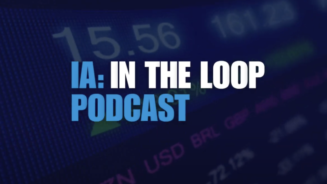clear and transparent. We have a five-year spread charge, which is based on the original investment – so that is clear and transparent. We also have an AMC-style charge, which is clear and transparent.
So I do not think that is the case for us as a business, or most of our competitors.
[The charges] are clear, they are understood, and I would be surprised if people struggle to have their proposition in the market, come the RDR.
But what is really compelling for Canada Life International is the fact we can be agnostic to the way advisers want to build their business. Discretionary fund management will become an important factor under the RDR.
We can link to 130 discretionary fund managers (DFMs). You can have multiple discretionary fund managers under one arrangement with us, and you can change them. We can link to 20 platforms, and we can link to 11 back offices.
So we have independent credentials, and I think a lot of advisers are worried about putting all their eggs in one basket. With us, you could have one product that says you can hold cash, you could have 30% in ‘ABC’ DFM, 30% in ‘XYZ’ discretionary manager, and 30% in an absolute return fund – and you can move that around. So for me, the proposition we have is right for the RDR.
What are the biggest opportunities for the sector, post-RDR?
There are simple things – the fundamentals that are there with an offshore bond. So you can defer income tax. You can manage the chargeable and tax positions.
You can choose when you pay your tax, where you pay your tax, and who pays your tax. That does not change.
Then you link it into the fact these are non-income-producing assets, so great from a tax-return perspective – you have got tax-free switching, you have got the tax-efficient appointment of capital, and you have got assignments. So you have got all those things – top-slicing, time apportionment relief.
Then you link it into estate planning – it is phenomenal for estate planning. Because you have tax deferral, you have the ability to make assignments to different beneficiaries, provided they are over 18. It really resonates in that market.
But then you start to get into retirement and tax income planning. So if you have a client who has other assets – collectives, equities, ISAs – the client can use their offshore bond.
You may not want to take your pension commencement lump sum at this stage, because if you take a full encashment with a bond, the gains are treated as savings income – so they come after earned income, but before dividend income. You can utilise the 10% band.
So there are lots of different planning opportunities around if you have an offshore bond and you have other assets, and you are planning someone’s retirement income.
The other one is, if you take portfolio gains, historically the bulk of it has come from dividend income. So the FTSE has bounced around, but if you look at the yield on the FTSE – that is what drives your return. If you are an investment manager, what is the best vehicle to hold an asset that is driving dividend income to your return? It is an offshore bond.
Looking ahead, what are Canada Life’s priorities?
There are a couple of things we have to focus on. Obviously, there is the RDR. It is what we do with the RDR and how we make that relevant to advisers. This goes back to the technical resource.
We are going to spend a lot of time with our key partners in working through the things that are going to be important to them.
Then there is us structurally being ready for the RDR as a business – and we are in good order.
A lot of firms will be looking at perhaps releasing their new terms and conditions for their clients in the final quarter, because they have to give notice under the FSA of any changes to the way they interact with clients.
We will be in good order to support that. We have got gender equalisation, which has an impact on our offshore whole-of-life. Then we have the wonderful thing called FATCA – that has potential implications and potential opportunities as well.
But from my point of view, I have a talented group of people that are in the field. It is making sure I deploy that resource appropriately, to support the right distributors we are working with – the right IFAs, the right banks – and then linking it into the RDR and being ready for
the RDR.




